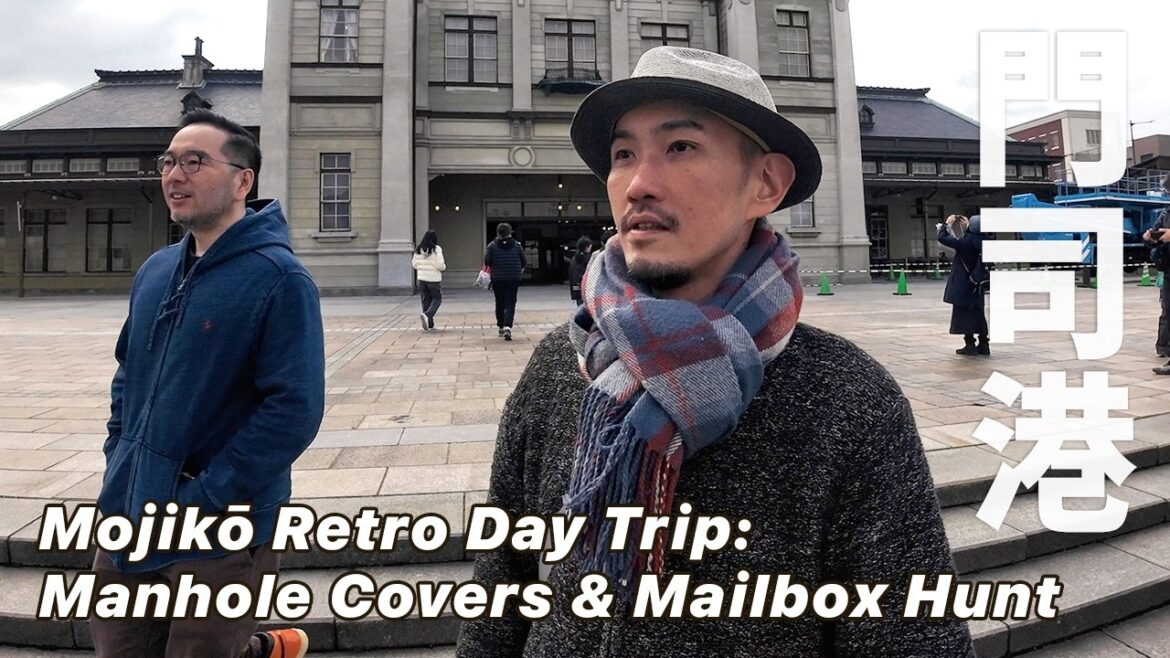Kyushu Mojikō Retro Day Trip: Manhole Covers & Mailbox Hunt | Travel with a Twist | Travel Vlog
Kevin, a good friend of mine for 35 years, visits Japan every now and then. This time, I joined him and his wife on a trip to Fukuoka, where we spent a day exploring Mojikō Retro. With their shared love for Pokémon GO, we set out to find two Pokémon-themed manhole covers. Somehow, they also had us hunting for a banana mailbox — I still don’t know where they got that idea.
Unfortunately, we missed the chance to ride the “Shiokaze-go” sightseeing train, not realizing it only runs on specific days. But we went with the flow and stumbled upon a vintage train exhibit and the historic Kōsō Hachiman Shrine — where we also met an adorable dog.
00:00 Opening
00:25 Mojikō Station (Bell of Departure, Fountain of Happiness & Water for the Return)
01:52 Lunch at Sushi Dokoro Mitsumoto
02:10 Kanmon Kisen Ticket Office (Ganryu Island Tickets)
03:12 The First Manhole Cover Hunt
04:39 The Banana Mailbox Search
06:31 Vintage Train Exhibit
06:48 Kōsō Hachiman Shrine
09:50 The Final Manhole Cover
11:18 Outro
************************************************
The Bell of Departure / Fountain of Happiness
************************************************
For travelers, it’s the “Bell of Departure”—symbolizing the hopes and dreams of passengers embarking on their journeys, as Mojikō Station serves as the starting point of the Kagoshima Main Line.
Meanwhile, the “Fountain of Happiness,” located beneath the bell, reflects the heartfelt wishes of those sending off travelers, wishing them joy and success on their journeys.
************************************************
Documents of Kōsō Hachiman Shrine
************************************************
These are medieval documents handed down at Kōsō Hachiman Shrine. From these documents, it is possible to learn about the shrine’s land holdings and tax offerings during the medieval period. Additionally, they reveal that the shrine was under the protection and reverence of the Ōuchi clan, who ruled this region at the time.
Among these, the “Copy of the Order for the Total Land Count of Moji Barrier’s Six Villages” was a land registry created in 1272 (Bunei 9). It clarifies the scale and structure of the public lands known as the “Six Villages of Moji Barrier” during the Kamakura period.
Another document, the “Land Donation Deed by Ashikaga Takauji,” was written in March 1336 (Kenmu 3) after Takauji’s victory in the Battle of Tatarahama, which allowed him to take control of northern Kyushu. On his way eastward, he visited Hachiman Shrine, prayed for the fulfillment of his military campaign and the long prosperity of his descendants, and donated land to the shrine. This document reflects Takauji’s hopes for victory in battles that would eventually lead to the establishment of the Muromachi Shogunate.
These documents are valuable materials that shed light on the dynamics of northern Kyushu during the later medieval period.
************************************************
Kusuhara Dance
************************************************
The Kusuhara Dance is a traditional rain-invoking dance that has been passed down in the Moji Port area and dedicated to Kōsō Hachiman Shrine, which was revered as the guardian deity of this region.
Originally, this dance alternated between local songs and kyōgen (a form of comic theater), which was a unique feature. However, the kyōgen aspect was lost during the Meiji period. It is said that during the early 16th century (Eishō era), the shrine’s head priest, while accompanying the regional lord Ōuchi to the capital, learned from court nobles and incorporated these elements into the rain-invoking dance.
The dance movements resemble noh’s shimai (formal dances) and retain an elegance reminiscent of medieval performing arts. It is considered a valuable aspect of the city’s folkloric art history.
************************************************
Others
************************************************
Sushi Dokoro Mitsumoto
https://tabelog.com/en/fukuoka/A4004/A400501/40022415/
“Shiokaze-go” Sightseeing Train Schedule
https://www-retro–line-net.translate.goog/jikoku/?_x_tr_sl=ja&_x_tr_tl=en&_x_tr_hl=ja
Crossroad Fukuoka
https://www.crossroadfukuoka.jp/en
————————————————————–
🎵 Music “Geisha Story” by ‘ARISU’
• (no copyright music) aesthetic lofi t…
💿 Listen everywhere:
https://lofihiphop.de/geishastory
✅ For more Copyright Free Music visit:
https://youtube.tamamusic.com
————————————————————–
#fukuoka #mojiko #mojikoretro #kyushu #manholecover #pokemon #pokemongo #bananamailbox #mailbox #kosohachimanshtrin #quitewalk #japantravel #livinginjapan #silentvlog

